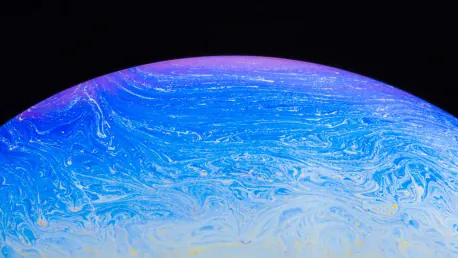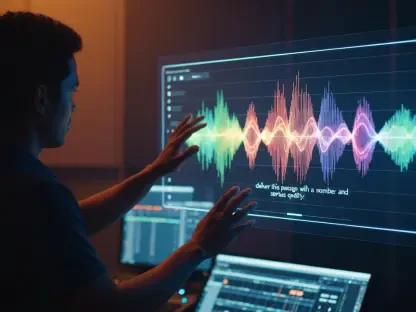In a groundbreaking advancement, a new global sensor network developed by Smith et al. leverages data from millions of smartphones worldwide to create an unprecedented space-weather monitoring system. This network is designed to enhance our understanding of the ionosphere, Earth’s electrically charged upper atmosphere, and improve the accuracy of satellite positioning and communications. The innovative approach is spotlighted by space weather expert Juha Vierinen from UiT The Arctic University of Norway, who emphasizes its potential to elevate space weather predictions and mitigate the adverse effects of solar phenomena. The significance of monitoring the ionosphere is highlighted by the event in February 2022, when a solar storm increased the density of the upper atmosphere, causing 38 Starlink satellites to lose their orbits and fall back to Earth. Such incidents underscore the critical need for accurate space weather predictions to prevent disruptions across telecommunications, satellite navigation, and even power grid operations.
Utilizing Smartphone Technology
The core idea behind this revolutionary sensor network lies in leveraging the existing infrastructure of smartphones. These ubiquitous devices, equipped with Global Navigation Satellite System (GNSS) receivers, are used daily by millions of people for navigation and positioning. The data collected from these receivers can provide extensive information about the ionosphere’s condition, as the signals they capture travel through this electrically charged layer of the atmosphere. By collecting and analyzing these signals on a grand scale, researchers can map space weather phenomena with unprecedented detail and frequency.
Ordinary GNSS receivers in smartphones worldwide can be transformed into a vast network of scientific instruments with the capability to gather real-time data on the ionosphere. This democratization of data collection enables a more inclusive approach to scientific research, where everyday technology contributes significantly to sophisticated endeavors. Moreover, it highlights how consumer technology, when harnessed correctly, can bridge gaps in scientific knowledge and facilitate the monitoring of complex environmental conditions. The integration of these data streams from millions of sources across the globe offers a more accurate and comprehensive understanding of space weather’s impact on Earth.
Addressing Space Weather Challenges
Space weather poses various challenges, including obstructed telecommunications, disrupted navigation services, and induced currents in power lines, all of which can have significant societal and economic impacts. The innovative use of smartphones demonstrates how widespread technology can contribute to advanced scientific research, helping to address these challenges more effectively. By capturing signals affected by the ionosphere, the global sensor network provides researchers with valuable insights into how solar storms and other space weather events affect Earth’s upper atmosphere.
With enhanced data, scientists can improve the accuracy of space weather forecasts, thereby reducing the risk of unforeseen disruptions to critical infrastructure. This increased predictive capability is essential for safeguarding telecommunications, ensuring reliable satellite navigation services, and stabilizing power grid operations that might otherwise be compromised by ionospheric disturbances. The sensor network’s ability to offer real-time monitoring and detailed mapping of the ionosphere represents a significant advancement in mitigating space weather’s impacts.
Future Implications and Scientific Advancements
In a significant advancement, Smith et al. have created a global sensor network using data from millions of smartphones to develop an unparalleled space-weather monitoring system. This breakthrough aims to enhance our understanding of the ionosphere, the electrically charged layer of Earth’s upper atmosphere, and improve satellite positioning and communications accuracy. Juha Vierinen, a space weather expert from UiT The Arctic University of Norway, highlights the system’s potential to boost space weather predictions and mitigate solar phenomena’s negative effects. The importance of ionosphere monitoring was underscored in February 2022 when a solar storm increased the upper atmosphere’s density, causing 38 Starlink satellites to lose orbit and reenter Earth’s atmosphere. This event underlines the critical need for precise space weather predictions to prevent disruptions in telecommunications, satellite navigation, and power grid operations. The network’s innovative approach could be a game-changer in safeguarding various sectors from the impacts of space weather anomalies.









